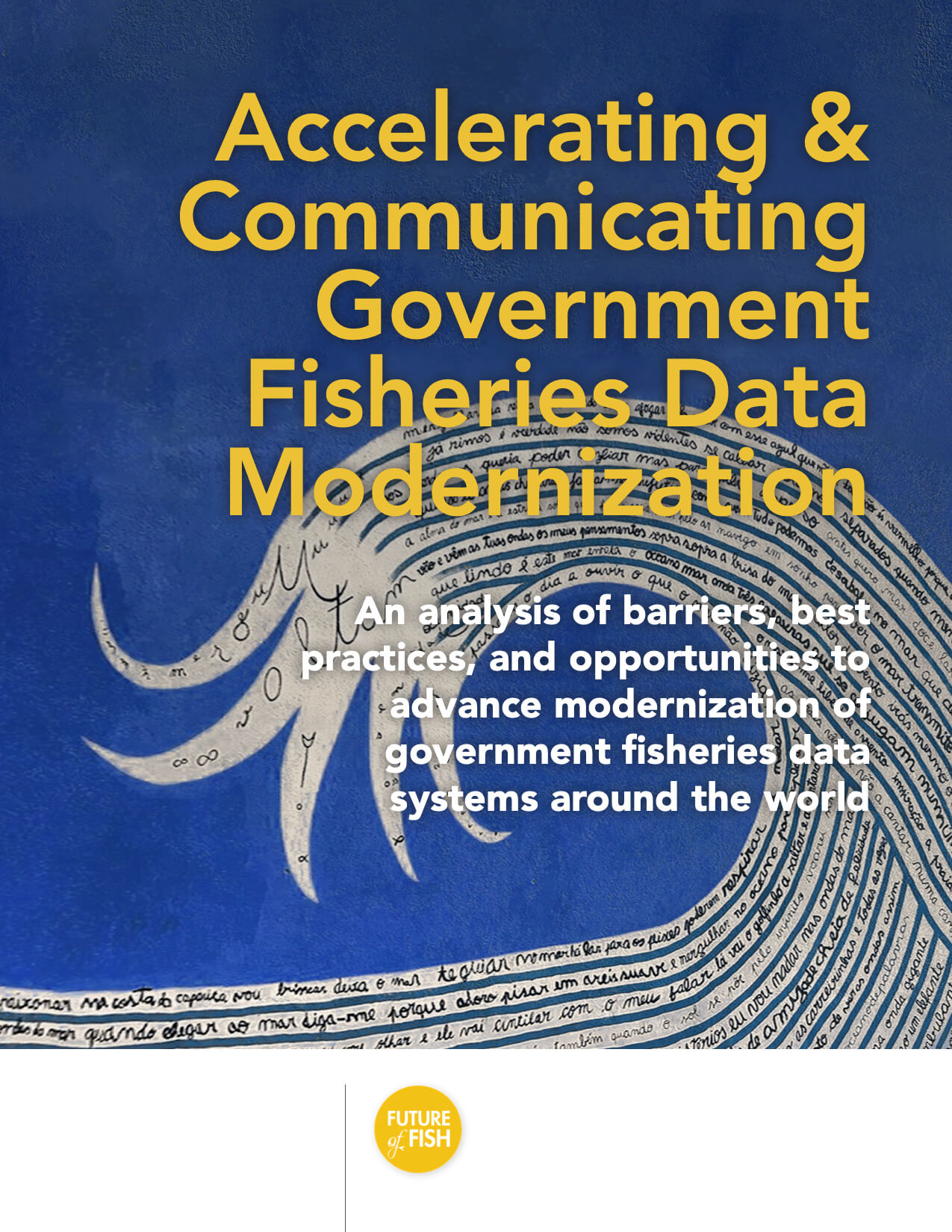
At Future of Fish, we collaborate with governments and international experts to design, implement, and finance lasting and equitable fisheries data collection and analysis systems. While no two projects ever look the same, a combination of work on the ground and in-depth research over the past three years has allowed us to uncover some commonly occuring barriers, opportunities, and best practices for this process that cross geographies and stakeholders.
Explore our recently launched Government Fisheries Data Modernization Toolkit, where you can download the full report and explore our findings to understand how we can accelerate better data systems that benefit industry, the public, and fisheries governance around the world.
A core part of our approach is to define and demonstrate the clear benefits of improved data systems to governments, a process that varies depending on individual as well as organizational goals and mandates.
As part of this work,we identified five key communication approaches and four strategic entry points to begin work with government agencies to advance fisheries data modernization.
For example, the four entry points we have identified are:
- Robust Fisheries Management for Resource Security
- Trade and Tourism
- Electronic Monitoring and Reporting Initiatives
- National and Maritime Security
Outside of the immediate and common government goals such as improved management or decreased IUU, data modernization should also be considered a risk mitigation tool–both in terms of decreased liability through improved data, as well as for increased capacity to rapidly adjust to supply chain disruptions through the use of centralized databases and interoperable data-sharing systems. From COVID to climate change, increasing data accuracy, speed and access directly increases system resiliency in the face of future disruptions.
For example, during COVID-19, integrated and shared data systems could support struggling fishers to process elogbook information to help provide access to relief funds; provide fishers with the information and resources needed to find available buyers; determine viable species for diversification options, and assess opportunities for aggregate sales with local partners. Accessible, integrated data systems and clearly defined governance frameworks allows everyone involved to better achieve the full potential benefits of data analyses and application.
This report is a practical guide for those looking to improve government fisheries data systems and governance frameworks. We break it down by looking at an overall outline of the process (how and what has to happen, with who), the barriers (why it’s not happening faster in more places), and some design principles (strategies for success!) that can help to get things unstuck.
Outside of our design principles, we offer clear solutions and share details from the 8 case studies that helped us to surface drivers, enabling conditions, stuck points, and strategies for success that exist across the system as a whole.
Our team also curated a list of 90 Resources for anyone who wants to learn more about Accelerating & Communicating Government Fisheries Data Modernization–although we also recommend visiting our friends over at the SALT and EM4Fish sites for more comprehensive and up-to-date resource libraries.

Are you a government official working to improve fisheries data management? We can help.
Send us an email at hello@FutureofFish.org.
Published Jul 15, 2021




